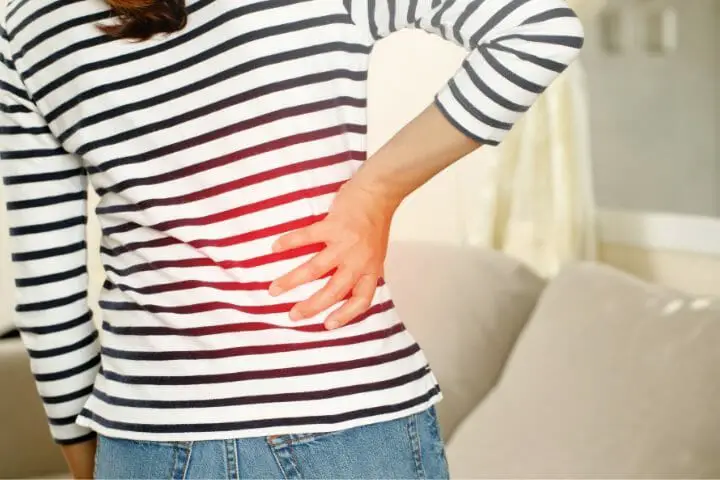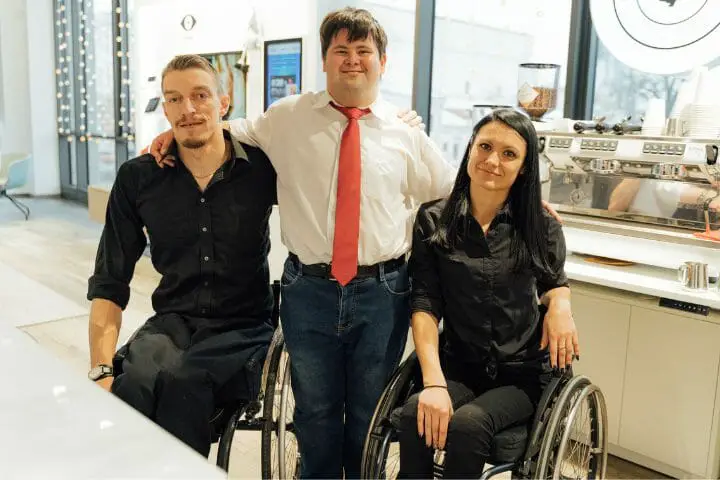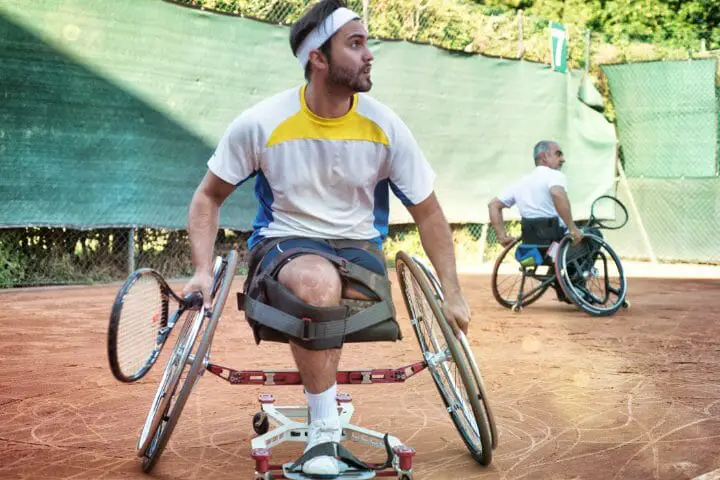Can you get disability for spondylosis? You most certainly can, but there are certain conditions attached to it that you must qualify to get the benefits.
Contents
Do you know that at least one person in 100 has spondylosis in America? It is one of the most overlooked back conditions in the country. The condition is expected to affect people above 60, but someone as young as 17 can also be diagnosed with it in recent years.
The severity of spondylosis is actual, and it can even prevent you from carrying out your day-to-day activities. If someone you know has been suffering from something similar, you should learn about the disability benefits for spondylosis, and this article will tell you precisely that! Read on!

What Is Spondylosis?
Spondylosis, also known as cervical spondylosis, is spurred by the degeneration of discs and joints of the cervical spine, which affects its movement and impairs the nerves.
The complications related to spondylosis may lead to spinal nerve injury, neck injuries, or even paralysis.
How Can Spondylosis Affect Your Ability to Work?
The symptoms mentioned above of spondylosis, if they get worse, can affect a person’s ability to work. By worse symptoms, we mean spondylosis reaching the root compression and duly affecting the coordination and balance of the body.
Sometimes, it causes so many problems that walking becomes pretty challenging. Thus, spondylosis affects a person’s ability to work.
For instance, someone who has spondylosis will feel continuous numbness or tingling in their upper and lower extremities. Sometimes, the weakness in the hands and feet is so much that a person cannot even carry out a data entry job.
Work that involves physical labor or sitting for hours also becomes quite a challenge for some people. Anything from heavy physical work (lifting movements), twisting, bending, static work (sitting in one place for hours), etc., will make things worse for people suffering from spondylosis,

So, what should a person who has lost their job do due to the severity of spondylosis?
The first thing is to take preventive measures and continue taking medications to improve your condition. Secondly, you must apply for disability benefits for spondylosis.
If this is the first time you have learned about it, read the next section thoroughly. If you already know about these benefits but do not understand the procedure, continue reading this article. We have explained the qualifications and more about the benefits of spondylosis below.
You might also like to read: How To Get Disability For Arthritis
Qualifying for Disability Benefits With Spondylosis
It is not always easy to qualify for disability benefits with spondylosis, and however, it is not impossible. Your back problem should be more than just regular wear and tear for successful qualification.
Let’s face it; most people suffer from some backache or chronic pain after their 40s, and thus, not all of them can be benefited from the social security fund.
The first thing you can do is consult a social security disability attorney to know if you can apply for the benefits. Listen to what he has to say, and it is all right to go ahead with your application even if they say that you cannot get it.
The Social Security Administration evaluates cervical spondylosis under section 1.04 of the Disability Blue Book; The section covers back conditions caused by the distortion of bones, joints, and ligaments, and compression of root nerve and spinal cord, which may limit the day-to-day functioning of an individual.
Osteoarthritis, degenerative disc conditions, herniated discs, spinal arachnoiditis, spinal stenosis, etc., are a part of this section. Even though the book doesn’t mention it specifically, spondylosis is a degenerative disc problem.
So, it can fall into the realm of disability benefits. However, there are certain conditions attached to it which we will be discussing in the next section.

Process of Applying for Disability Benefits With Spondylosis
Thus, there are specific qualifications that one needs to have or acquire to be given the help of spondylosis. We have prepared a step-by-step guide for you to understand the qualification procedure for disability benefits with spondylosis.
Step 1: Medical Evidence
The applicant must provide medical evidence for nerve root compression. MRI, CT Scan, X-Rays, etc., work as medical evidence to show that the person applying for the job suffers from the condition.
Apart from medical imaging, there must be evidence that confirms that the nerve root compression causes the following –
- Neuro-anatomic distribution of pain, that is, pain caused by the nerve
- Loss of motor functions
- Sensory or reflex loss
- Limited spinal movements
- Abnormal lower back responses when lifting a leg from both a seated or a lying position

Step 2: A social security examiner will go through the documents.
In March 2017, there was a bit of modification in the rule. The social security examiners would no longer give weightage to the testimony and evidence provided by the applicant’s doctor or physician. At least not lesser than the evidence provided by its medical experts.
So, if your diagnosis isn’t convincing enough, you would lose the benefit.
A social security examiner will see the following –
- Your physician or doctor’s diagnosis of the degenerative disc disease.
- Medical records, including MRIs, CT scans, X-Rays, prescriptions, etc., prove that you have been suffering from nerve root compression, limiting your functional activities.
- A detailed description of your pain and other problems, preferably written and signed by your physician.
It is advised to keep a diary and write about your symptoms for at least 30 days tracking how spondylosis affects your regular life. Remember, your examiner and concerned authorities would like to know how your spondylosis affects or limits your daily life.
For instance, can you do your laundry, pick up groceries, and clean your home? Can you get up by yourself and walk? If you can’t do all these activities, the chances are that you will get the benefits.
You might also like to read: Can You Get Disability For Scoliosis
Step 3: See the medical expert once every month or two.
Make sure to visit the medical expert assigned to you once every two months and give them the exact condition of your pain level. Make sure that you are as specific as possible.
The documentation of day-to-day activities and how they affect your life is an important and plausible way to have a more significant influence on the medical expert.
Also, you must make sure that the physician is recording your message or at least making notes of your discussion. It usually fast-tracks your application to acceptance.

Step 4: Hire legal assistance
If you can afford to hire an attorney to file the claim for you, it would increase your chances of receiving the benefits and accelerate the process 3 times!
People who apply for the benefits without legal assistance usually wait for a year or more to get a reply from the authorities.
If you do not have enough money to hire one, you can take free legal advice from a local lawyer at zero fees. It definitely will make a difference in learning technical knows and hows of the application process.
Can You Get Disability for Other Related Conditions?
Can you get a disability after back surgery?
Yes, you can get a disability after back surgery or back problems alone. Even after surgery, some people cannot work, and if the records and prescriptions show the same, the person can get monthly disability benefits.
The SSA usually considers three to four months for the patient to sufficiently recover from the surgery. The impairment should last for 12 months (minimum) to qualify for the benefits.
If the spinal or back surgery causes new problems or the underlying problem did not repair even after surgery, like nerve root compression in the disc, one can still apply for disability benefits and evidence.

Can you get a disability for ankylosing spondylitis?
If the ankylosing spondylitis (AS) is severe enough to keep you from working or significantly limiting your day-to-day functioning, you may get disability benefits for it. However, it is essential to meet the disability criteria mentioned in section 14.09C of the Blue Book to qualify for the same.
The application to qualify for AS disability is a complicated process. You must provide evidence through medical records and documents to prove that you are eligible for the criteria mentioned in the blue book.
To qualify, you should be able to exhibit at least one of the following conditions –
- Fixation of cervical or dorsolumbar spine, which should have been measured at least 45 degrees at the time of the physical examination from the vertical position; or
- Fixation of the cervical or dorsolumbar spine measures 30 degrees or more on flexion but at least 45 degrees from the vertical position.
- If you cannot meet either of the above two conditions, you can try to qualify using Inflammatory Arthritis under 14.09C.
You can start by visiting your nearest SSA office or applying online at SSa.gov, and they shall guide you further.
You might also like to read: Can You Get Disability With Tourette’s Syndrome?
Can you get a disability for spondylosis?
Yes, you can get a disability for spondylosis since it is a degeneration of bones and joints in the neck region. Even though the Blue Book doesn’t specifically mention spondylosis, it has included people suffering from degenerative disc problems in the criteria.
So, yes, if you have severe spondylosis, to the point that it limits your body’s daily functioning, like cleaning, bathing, or getting up from the bed, you can get disability benefits.
However, you must remember that it is a complicated process and doesn’t always end in your favor. Make sure that you discuss your pain and problems specifically with the physician and have legal assistance and medical records to back you up.

Is foraminal stenosis a disability?
Foraminal stenosis is the tightening of the openings located between the bones of one’s spine. The openings, known as foramen, when narrow or closed, pinche the nerves passing through the spine,
It can cause numbness, weakness, burning sensations, needle sensation, tingling, and in severe cases, pain in the hands and feet. These symptoms can most certainly limit a person’s day-to-day functioning, like standing or sitting for long hours, lifting things, twisting, bending, etc.
Thus, it depends on the severity of your case, which can decide whether or not it is a disability and qualifies for benefits.
Is radiculopathy a disability?
Radiculopathy is not a condition but various symptoms that occur in the nerve root of the spine. So, radiculopathy, by any means, cannot be considered a disability and thus, cannot qualify for benefits.
Is tarsal coalition a disability?
A tarsal coalition is a disability wherein during the development of the fetus, bones in the midfoot or heel get stuck together instead of separating. Due to the lack of separation, the bones often cause pain in the foot area because of abnormal growth.
For the treatment, doctors prescribe anti-inflammatory drugs, orthotics, physical therapy, and in severe cases, surgery. Tarsal coalition is undoubtedly not a disability since it usually doesn’t stop people from working. In exceptional cases, one may seek legal guidance to get disability benefits.
You might also like to read: Can You Get Disability For Borderline Personality Disorder?
Qualifying for Disability Using a Residual Functional Capacity
If you do not meet the listing or qualify for the disability benefits with spondylosis, you can still get your benefits approved with a medical-vocational allowance.
The term for it is Residual Functional Capacity (RFC), which states or re-confirms how your condition has limited or prevented you from doing the work you were qualified or trained to do. The RFC form is prepared by the medical expert treating the concerned patient.
The medical-vocational allowance takes your form and condition into consideration. It also goes through your qualifications, age, education, skills, etc., and learns more about your situation.
If Disability Determination Services agree that your condition limits your vocational capacity, it will reward you with disability benefits.

Am I Likely To Get My Disability Claim Approved Based on My Spinal Disorder?
It is never easy to get a disability claim approved based on one’s spinal disorder. However, it is not unlikely to get the benefits if your condition is so troubling that it limits or prevents your daily activities.
Some of the spinal disorders listed in the Disability Blue Book include –
- Degenerative disc diseases
- Spinal arachnoiditis
- Facet arthritis (wear and tear of cartilage in a facet joint)
- Osteoarthritis
- Spinal stenosis
- Vertebrae fractures
- Herniated nucleus pulposus
There are several more spinal diseases mentioned in the book, and it is suggested to get some legal assistance to understand the application process. So, if you have the medical recordings and prescriptions that prove your inability to carry out daily functioning, you have a chance to get disability benefits.
You might also like to read: Can You Get Disability For Panic Disorder
What Process Does SSA Use To Determine if My Spinal Disorder Is Disabling?
The Social Security Listing of Impairments, known as the Blue Book, lays down the conditions and criteria that qualify a person to apply for the benefits.
Section 1.4 of the Book mentions’ Disorders of Spine.’ If you have any of the given conditions, you are automatically eligible to apply for the benefits, either Social Security Disability Insurance or Supplemental Security Income.
Further, SSA looks into your medical records and evidence and learns about your day-to-day activity to see if your condition prevents you from living everyday life. If it finds your situation reasonable, it shall approve your request.

Frequently Asked Questions
1. Is spondylosis a chronic condition?
Spondylosis is a chronic condition that is generally age-related but can also affect people in their 20s and 30s. It is even controversial if the patient has to undergo surgery to get rid of the stiffness and back pain.
2. Can I work with spondylolisthesis?
It is possible to work with this condition as long as you actively pursue exercises like lumbar extension and flexion, strengthening lower back muscles, abdominal muscles, etc. Along with the activity, you must also get regular physical therapy and stay in touch with your medical expert.
3. What are the warning signs of spondylosis?
Some of the significant warning signs of spondylosis include headaches, backaches, dizziness, difficulty maintaining balance, stiffness in the neck, neck pain, tingling sensation in the legs and arms, etc.
A Few Final Words
Everyone deserves to live a healthy life, but sometimes, life doesn’t give us what we want. Back conditions like spondylosis can be damaging for people who know their potential and yet have to resort to financial help from other people.
So, if you know someone who has been struggling with spondylosis and is looking for some relief, tell them about the disability benefits qualification. Your thorough reading of this article might help someone in need.
Thank you for reading the article, we hope we covered all your questions about getting disability is you have spndylosis or other related conditions.
